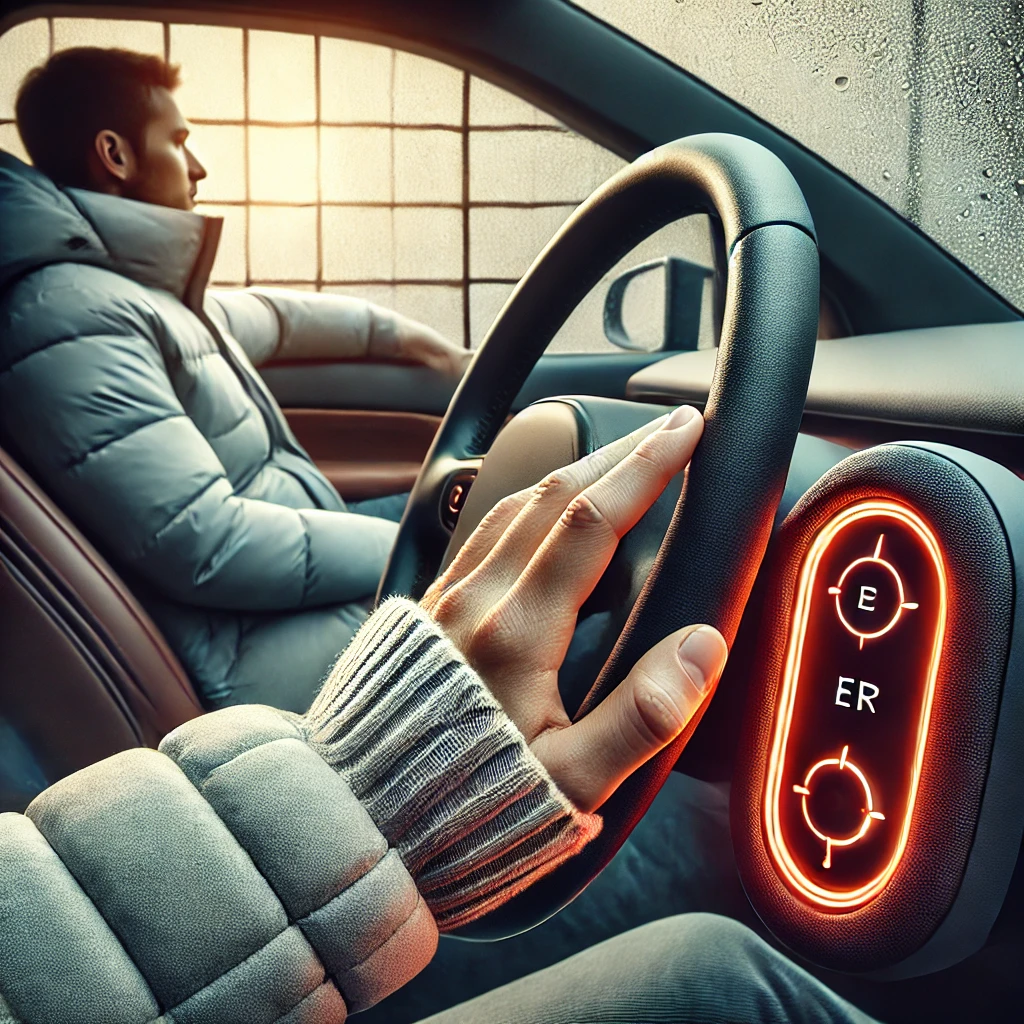Electric vehicles (EVs) offer incredible benefits, from reduced emissions to quieter drives. Yet, they come with unique challenges—especially when it comes to heating. Unlike internal combustion engine (ICE) vehicles, EVs can’t rely on engine heat to warm the cabin. Instead, they use electric heaters, which impact battery life and, consequently, driving range. So, how do electric vehicles keep you warm, and what’s the best way to stay comfortable in an EV during the coldest months?

Table of Contents
Understanding Electric Vehicle Heaters
Unlike ICE vehicles that use waste heat from combustion to warm the cabin, electric vehicles have no exhaust heat to capture. EVs rely solely on electric heaters to keep the cabin comfortable in colder climates. While these heaters are effective, they pull power directly from the battery, meaning each use reduces the vehicle’s overall range. This dependency on battery power makes heating efficiency crucial for EV drivers.
Types of Heaters in Electric Vehicles
To keep the cabin warm without excessive battery drain, EVs employ various heating technologies. Each of these heater types has unique characteristics that balance warmth and battery conservation.
Resistive Heaters
Resistive heaters are among the simplest heating methods for EVs. In resistive heating, electric current flows through a heating element, creating heat that is then circulated within the cabin. While this method is effective, resistive heaters can be quite energy-intensive. This drawback makes them less ideal for prolonged use, especially if preserving battery range is a concern.
PTC Heaters (Positive Temperature Coefficient Heaters)
PTC heaters operate similarly to resistive heaters but with a smart twist. They use materials that increase in resistance as they warm up. Once a desired temperature is reached, the resistance limits further current flow, making PTC heaters self-regulating and more energy-efficient than standard resistive heaters. Many EV manufacturers favor PTC heaters for this reason, as they offer a compromise between effective heating and energy conservation.
Heat Pumps
Heat pumps are a game-changer for EV heating, working more like an air conditioner in reverse. By transferring heat from outside air to the cabin, heat pumps are highly efficient and use significantly less energy than resistive or PTC heaters. However, heat pumps are most effective in mild to moderate cold. In extreme cold, they struggle to extract heat from outside air, and vehicles may need to supplement with additional heating methods.
Heating Element Placement in EVs
To enhance comfort without heavily taxing the battery, many EVs incorporate heating elements directly into seats and steering wheels. Heated seats and steering wheels warm the driver and passengers directly, reducing the need to heat the entire cabin. This approach is not only energy-efficient but also offers a more immediate feeling of warmth on frosty mornings.
Comparing EV Heating with Traditional ICE Heating
The heating systems in EVs and ICEs couldn’t be more different. Internal combustion engines naturally generate excess heat, which gets repurposed to warm the cabin. EVs, on the other hand, don’t produce significant waste heat, so they must create warmth from scratch. This need for dedicated heating systems is why EVs often rely on a combination of heating methods to balance warmth and efficiency, a delicate act that ICE vehicles don’t need to consider.
Benefits of Efficient Heating in EVs
Effective cabin heating in EVs offers multiple benefits. Efficient heaters conserve battery power, which directly influences driving range—a critical factor for EV users. Better heating efficiency also means a more comfortable ride in cold conditions without sacrificing too much range. As heating technology improves, the gap between winter and summer range for EVs is narrowing, making these vehicles even more practical in a broader range of climates.
The Role of Air Conditioning in EV Heating
In electric vehicles, the heating, ventilation, and air conditioning (HVAC) systems work together to provide an optimal climate. These systems are crucial not just for temperature control but also for dehumidifying the cabin air, preventing windshield fogging. In cold weather, however, HVAC systems may require additional power, impacting the battery. This interdependence of heating and cooling functions in EVs highlights the importance of energy-efficient design in every aspect of the vehicle’s climate control system.
The Challenges of Heating Electric Vehicle Cabins in Cold Weather
One of the most significant hurdles for EVs in cold climates is the battery’s performance in low temperatures. Batteries don’t operate as efficiently in extreme cold, which can lead to slower charging times and reduced range. Since EV heaters draw power directly from the battery, prolonged heater use can impact the vehicle’s total available range. To help mitigate these effects, some EVs include preconditioning features, allowing drivers to warm the cabin while the vehicle is still plugged in, preserving battery life for the road.
Innovations in EV Heating
Advancements in EV heating technology are ongoing, with a strong focus on improving efficiency without draining the battery. Some manufacturers are exploring advanced heat pump systems capable of functioning efficiently in extremely cold temperatures. Others are developing battery thermal management systems that optimize battery temperature, reducing the amount of energy required for cabin heating. As these technologies evolve, they promise to make EVs even more viable in colder climates without sacrificing range or comfort.
Conclusion
Heating an electric vehicle presents unique challenges, but innovations in heating technology—from heat pumps to PTC heaters and targeted heated elements—make it easier than ever for EVs to tackle cold weather comfortably. By using energy-efficient systems, EVs conserve battery power while keeping cabins warm. With continued advancements in heating technology, electric vehicles will only become more adept at handling winter weather, making them a solid choice for drivers in all climates.
FAQs
1. How do electric vehicles heat the cabin in winter?
Electric vehicles use electric heaters, including resistive heaters, PTC heaters, and heat pumps, to warm the cabin since they don’t produce waste heat like gas-powered engines.
2. Do heated seats and steering wheels use a lot of energy in EVs?
No, heated seats and steering wheels are more energy-efficient because they heat occupants directly rather than the entire cabin, using less power overall.
3. Can cold weather affect an EV’s battery life?
Yes, cold weather can reduce an EV’s battery efficiency and driving range, as batteries are less effective in low temperatures, especially when heaters are used heavily.
4. Why don’t EVs use engine heat for warming the cabin?
EVs lack internal combustion engines, which naturally produce waste heat. They rely entirely on electric systems for both propulsion and cabin heating.
5. Are heat pumps more efficient for EVs in winter?
Heat pumps are more efficient than other heaters in moderate cold but may need to be supplemented with other heating elements in extremely low temperatures.
More from sciencetech.site


